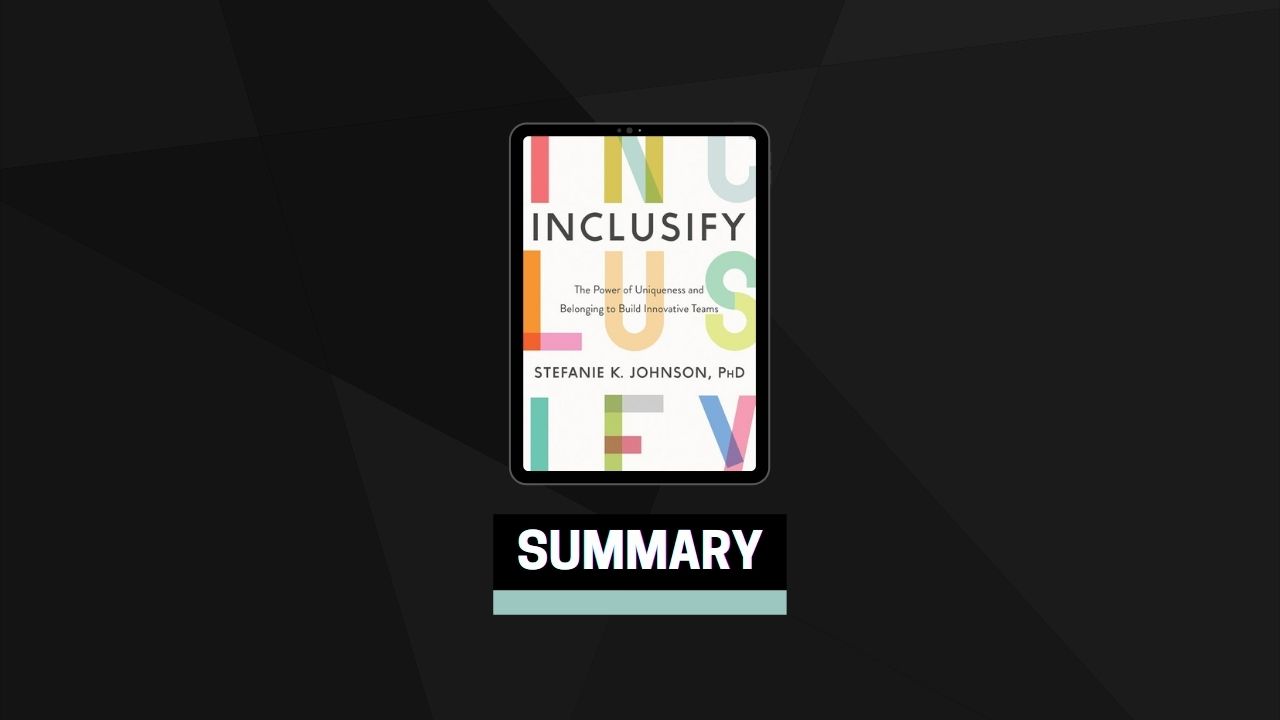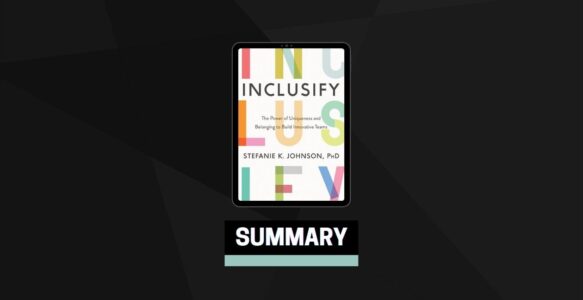Kindle | Hardcover | Audiobook
The Power of Uniqueness and Belonging
UNIQUENESS + BELONGING = INCLUSION
Without both of these essential ingredients, one cannot feel included. At the worst end, you can imagine feeling that you don’t belong and your uniqueness is not seen. This causes employees to feel invisible. What does that look like in the workplace? Invisible employees are often shift workers or remote workers, who may actually go unseen by their coworkers. But you may also feel invisible if your job role is discounted by those around you. For example, cleaning staff often go unnoticed in the office. No one makes eye contact with them, no one says hello, and no one acknowledges their work. Being totally ignored can cause you to feel dehumanized, to experience shame, and to want to quit your job.
Contrast these feelings with when you feel included: valued and accepted for who you are. You feel that your ideas and contributions are recognized and that you are an essential member of the team. You feel engaged, you work hard, and you want to go to work. This is the goal of leadership: to create inclusion so that employees’ work is beneficial to their organization and those employees benefit from working in that organization. Rather than ignoring difference, Inclusifyers create a team where everyone belongs because they know that acknowledging everyone’s unique talents and perspectives strengthens the organization.
The ABCs of Breaking Bias
You’re reading this book because you genuinely want to be the best leader you can be. That’s where we all need to start—by shining a light on the biases that might be affecting our judgment and leadership strategies. We all hold biases of one kind or another. But only self-examination can help us make this breakthrough. Yes, it might feel a little uncomfortable, and that’s okay. We’ve all heard that being willing to break out of our comfort zones is a good leadership skill. This is the perfect time to start doing it. To start you on the path to overcoming your biases, Stefanie has created the ABCs of Breaking Bias: Admit it, Block it, Count it.
Admit It
One of the first things we have to do to break bias is to start by admitting that it exists. It seems like an easy thing to do, but many people cannot do it and are even less likely to admit that they, as good people, can be biased. But the reality is that we all have biases, and when we try to suppress them rather than acknowledge them, they actually have a greater effect on our behavior than they otherwise would. In what the social psychologist Daniel Wegner called the paradoxical effects of thought suppression, he found that when we try not to think about something, we focus on it all the more
One way that many organizations such as PricewaterhouseCoopers (PwC), Facebook, Coca-Cola, and Lockheed Martin try to get their employees to raise their awareness of unconscious bias is through unconscious bias training. In a higher education setting, one institution that implemented unconscious bias training was able to increase the proportion of women faculty hired from 32 to 47 percent.
Sometimes it is just getting that small nudge to understand and admit that unconscious bias exists that can make all the difference. More and more companies are implementing unconscious bias training to improve their diversity efforts. To that end, Tim Ryan, the US chairman of PwC, started the CEO Action for Diversity & Inclusion group, which now comprises over 800 CEOs.
Block It
Unfortunately, merely admitting that you have bias (i.e., you are human) isn’t enough. It can be impossible to overcome by willpower alone. For example, if you have to make a hiring decision, you first have to alter human resources systems (such as how you select people, promote people, find mentors) to ensure that bias cannot continue to affect your judgment. That means setting your criteria in advance, judging people against those criteria (and not creating new criteria), and then making choices on the applicants’ qualifications rather than “culture fit” or your “gut.”
The easiest way to achieve this is likely by anonymizing assessments (removing the names from applications) so you cannot be biased. The consulting company GapJumpers showed that when traditional screening was used for hiring, 80 percent of the people who made it to the first-round interview were white, male, able-bodied individuals from elite institutions. In anonymized selection, that number dropped to 40 percent.
Count It
Everyone has heard the statement “What’s measured matters,” and this is true of diversity.
Of all interventions, setting goals is the most effective action organizations can take to successfully increase their diversity.
A necessary first step in this process involves setting benchmarks. To do so, employers need to consider the population they’re drawing from. Imagine you are hiring an engineer and you want to increase the selection of women. What is your benchmark? The population? A little more than 50 percent of the US population is women. Or you could say that you are going to benchmark against college graduates; 20 percent of graduating engineers are women. You could also choose the industry average; only 11 percent of practicing engineers are women. Finally, you could look at what industry leaders are doing. Facebook’s batch of new engineer hires was 27 percent women. You could benchmark on that. But does using these numbers make sense if you are in Japan? In Oman? No—in Japan only 5 percent of engineers are women, and in Oman 53 percent of engineers are women. The point is, you need to decide what a relevant benchmark is—hopefully you aspire to do better than the status quo—and set your goals accordingly.
In sum, everyone would benefit from the ABCs of Breaking Bias, starting with the first step of admitting that we have unconscious bias and that those around us do as well. With that as our foundation and a couple of tools to address it, we can begin to move forward into Inclusifyer territory.
Three Lessons to Put You on the Path to Inclusifying
There are three foundational points to remember before Inclusifying: First, the playing field is not level; people have to travel different distances to get to the same place. Second, entrenched systems can inhibit your diversity and inclusion efforts. And third, we are living in a post-#MeToo world.
Lesson #1: The playing field is not level
Many people insist that it is easy to ignore people’s background information or argue that it is unfair to hold candidates’ relative advantages against them when making hiring or promotion decisions. But
this is a red herring. Even if you don’t care about social justice and improving inequality, your organization will be better off hiring people who have achieved more with less because they demonstrate a wealth of skills that will serve your organization.
Lesson #2: Systems can create inequality.
The second lesson relates to removing systemic barriers to some groups, often referred to as system biases. These are laws, customs, and practices that contribute to inequities in society. Even if people are totally unbiased, the systems in which they operate can still create bias. There are system biases that make it much more difficult for the poor, as an example, to achieve the American dream.
Lesson #3: We Live in a Post-#MeToo World
#MeToo has shown us how organizational systems can actually protect predators in the workplace.
HR professionals need to think deeply about how their systems are designed and whether they are truly effective at creating a safe and productive environment for everyone. Being proactive about sexual harassment could save organizations billions of dollars; corporate scandals like those we have seen during #MeToo cost an average $4 billion per company.
The psychological cost to those who are harassed is much greater than that. Thus, organizations need to remain vigilant and continue to improve systems and processes.



